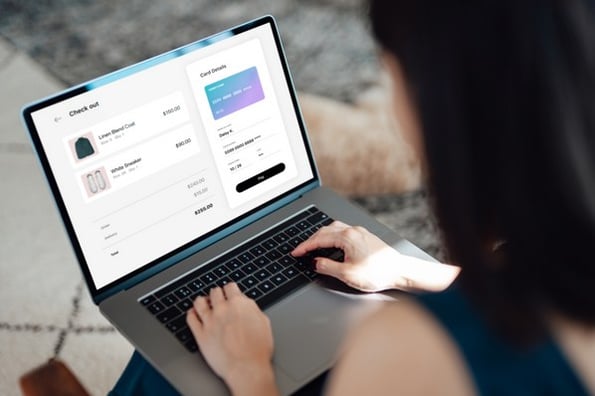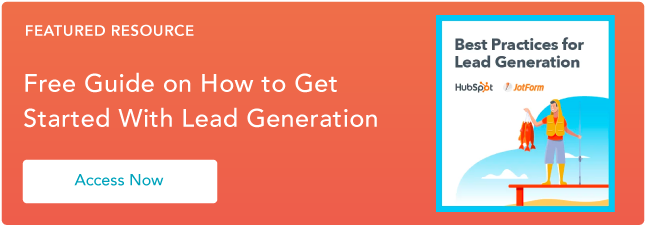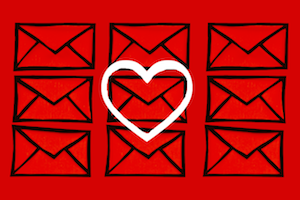As companies adopt inbound marketing as a way to generate more leads, the importance of having an effective lead nurturing strategy becomes very clear. In most cases only a relatively small percentage of your inbound leads will be ready to make an immediate purchase, leaving upwards of 90% of your inbound leads on the table.

Implementing an effective lead nurturing strategy can have a huge impact on the results of your inbound marketing strategy, customer loyalty, customer retention, revenue, and more .
In this guide, we'll cover seven of the most effective lead nurturing tactics you can implement at your company.
How to Nurture Leads
The process of nurturing leads involves purposefully engaging your target audience by offering relevant information, supporting them in any way they need, and maintaining a sense of delight throughout every stage of the buyer’s journey.
Nurturing leads is critical to your business's success because these tactics directly impact a customer's decision about whether or not they want to convert into paying customers. There are a number of ways to nurture leads including targeted content, multi-channel nurturing, multiple touches, timely follow-ups, and personalization.
Despite the clear benefits of lead nurturing, marketers can struggle to build the right strategy around it. According to the 2019 Lead Nurturing & Acceleration Survey, 60% of respondents gave their nurture programs a failing grade.
There’s a huge opportunity for savvy marketers (like you) to implement effective lead nurturing strategies and gain an advantage over your competition.
Let's get started.
7 Amazingly Effective Lead Nurturing Tactics
Although there are a number of lead nurturing strategies out there, here are seven of the most effective, no matter what type of business you work for.
1. Leverage targeted content.
When it comes to lead nurturing, one size certainly does not fit all. As the research proves, strategically nurturing your leads with targeted content can significantly improve results.
Start by working to understand each of your unique buyer personas. Then, create an assortment of targeted content designed to nurture each of your personas based on their characteristics like interests, goals, objectives, and marketing triggers.
You should also have a marketing automation platform in place to help you identify, segment, and target your unique buyer personas as you scale your strategy.
2. Use multi-channel lead nurturing techniques.
In the past, most lead nurturing strategies involved setting up a simple email drip campaign that would send out generic emails to a list of prospects.
Today, marketers like you are looking for new tactics and technologies that include and go beyond email nurturing. With the help of powerful marketing automation platforms, savvy marketers are now executing multi-channel lead nurturing strategies.
Effective multi-channel lead nurturing most commonly involve a combination of marketing automation, email marketing, social media, paid retargeting, dynamic website content and direct sales outreach. Because there are so many tactics involved, to execute this properly, you really need to ensure that your sales and marketing teams are well aligned and working cohesively.
3. Focus on multiple touches.
While the buyers journey for every product and service can be quite different, research has suggested that on average, prospects receive ten marketing touches from the time they become aware of your company til the time they convert into customers.
As you can imagine, the most successful lead nurturing strategies deliver content that helps prospects progress through the buyer’s journey by addressing common questions and concerns. In addition to email tactics, consider how you can use a mix of content types like social media, blog posts, whitepapers, interactive calculators, or even direct mail, to nurture your prospects into customers.
4. Follow up with leads in a timely manner.
The benefits of immediate follow up calls seem quite evident, but most organizations still aren’t acting very quickly.
Automated lead nurturing can help you reach large groups of prospects, but a timely follow-up email or a phone call is still often the best way to convert inbound leads into qualified sales opportunities. That's because the odds of converting a lead into a sales opportunity are exponentially higher when the lead is contacted immediately following a website conversion.
When you make a timely, well-planned call to an inbound lead, it’s far more effective than any volume of cold calling. You know exactly what the prospect is researching based their recent browsing behavior — plus, you have enough information about the prospect to do some initial research about the organization they work for and their role within the company.
5. Send personalized emails.
Email marketing continues to be a highly-effective tactic for lead nurturing — and the personalization of those emails tends to produce better results. A study by Accenture found that 41% of consumers switched businesses due to a lack of personalization.
There are many ways to personalize emails to improve your lead nurturing strategy. You can send triggered emails when a visitor completes an action like downloads your gated content, clicks on links in your emails, visits certain pages on your website, or demonstrates a high level of engagement.
When you combine the power of marketing personalization with behavioral triggered emails you can deliver the right marketing messages to the right people, at exactly the right times.
6. Use lead scoring tactics.
For those who are new to the concept of lead scoring, this methodology is used to rank prospects on a scale that represents the perceived value each lead represents to the organization.
Lead scoring can be implemented in most marketing automation platforms by assigning numeric values to certain website browsing behaviors, conversion events, or even social media interactions.
The resulting score is used to determine which leads should be followed up with directly by a sales rep and which leads need to be nurtured more.
7. Align your sales and marketing strategies.
When sales and marketing align, lead nurturing strategies are more successful and customer retention rates improve.
For both sales and marketing to contribute to lead nurturing identify the exact points in the buyer's journey that prospects should be transitioned between teams — to do so, consider different triggers like lead scoring, workflow enrollment, and conversion events.
The shared expectations, responsibilities, and goals for this cross-team collaboration should be outlined in a sales and marketing service level agreement (SLA). Creating a SLA will help the two teams hold each other accountable for converting leads and effectively nurturing them into paying customers.
Leverage Lead Nurturing Tactics
To wrap up, let’s summarize what these seven effective lead nurturing tactics entail.
1. Targeted content: Tailor intriguing, entertaining, and delightful content to target audience members so you can identify the most-qualified leads.
2. Multi-channel lead nurturing:Reach and nurture your audience where they are — on multiple channels — rather than just email.
3. Multiple Touches: Boost touches with a mix of content types and channels to increase your interactions and engagement among target audience members.
4. Timely Follow Ups: Follow up with your leads in a timely manner to keep them engaged and interested as well as keep your brand top of mind.
5. Personalized Emails: Personalize your emails (and all lead nurturing tactics, when possible) to promote customer retention.
6. Lead Scoring: Implement a lead scoring strategy to help you determine which leads you should focus your time on.
7. Sales and Marketing Alignment: Align sales and marketing teams to improve your lead nurturing tactics and boost customer retention.
By using some or all of these tactics, your lead nurturing efforts are bound to be effective — so, start experimenting with them on your team today.
Editor's Note: This blog post was originally published in March 2016, but was updated for comprehensiveness in March 2020.




![5 Email Campaign Ideas to Help Increase Conversion Rates [Infographic]](https://blog.hubspot.com/hubfs/email-drip-campaign-ideas.jpeg)






![How to Expand Your Lead Nurturing Strategy Beyond Just Email [SlideShare]](https://blog.hubspot.com/hs-fs/hub/53/file-1390659247-jpg/Blog_Thinkstock_Images/lead_nurturing.jpg)